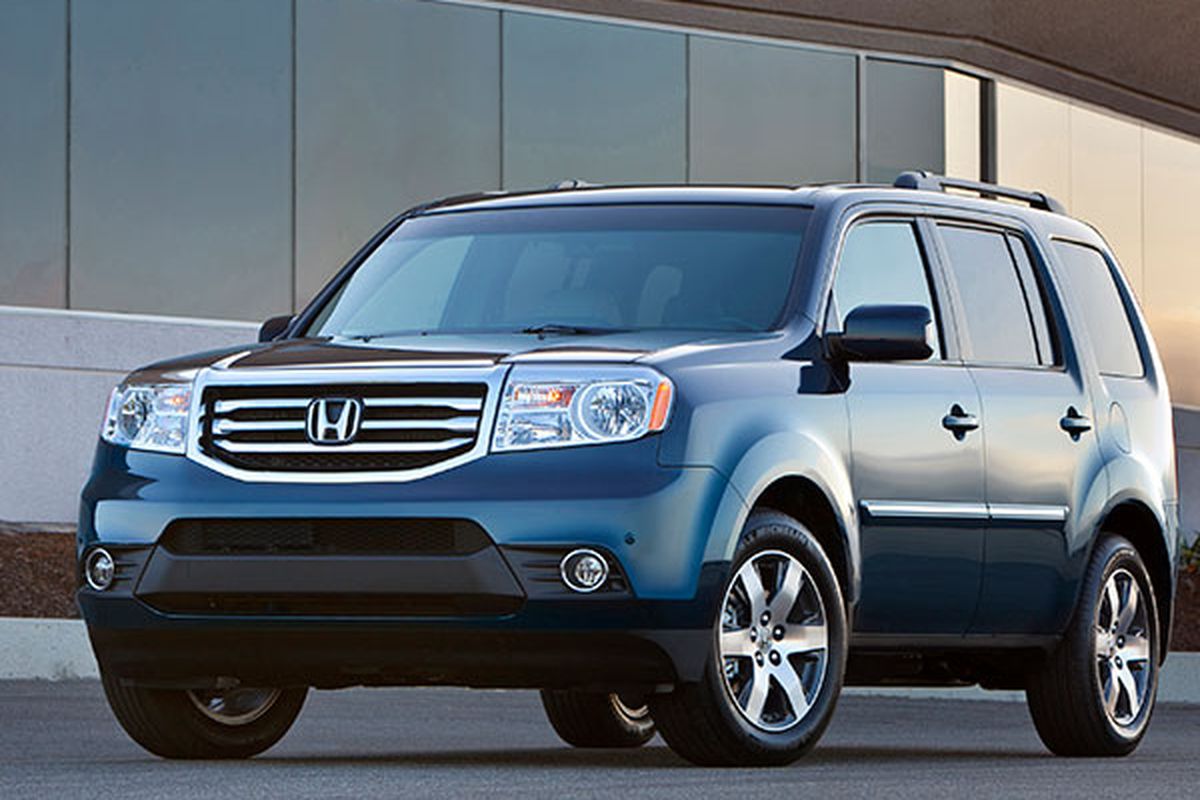Honda Pilot: Old-timer scores heavily

Park it among a crowd of slope-roofed, slippery-sided competitors, and Honda’s Pilot plays the role of grizzled old-timer.
Upright and boxy, it looks like the crossover that time forgot.
There’s a method behind that madness, though. That old-school styling obscures one of the segment’s roomiest, most comfortable and most utilitarian interiors. The Pilot’s slab sides and flat roof enable three rows of adult-size seating and a cargo hold that boasts superior real-world capacity.
The midsize Pilot debuted in 2002 and received its first makeover in 2008, when a larger, roomier version arrived. Since then, the segment has exploded and the Pilot faces a new generation of slick-skinned competitors.
Despite its age, though, the Pilot remains a popular pick; 2013 sales soared to a record 126,628 units.
Most observers expected an all-new, third-generation Pilot this year. Honda appears to have pushed back its launch to fall 2015, however; perhaps in part to improve its performance in the Institute for Highway Safety’s new small front overlap test.
The last round of updates arrived last year, with the addition of a standard rear backup camera, 8-inch high-resolution LCD display, USB port, Bluetooth phone and audio and tri-zone climate control.
All pilots are powered by a 24-valve all-aluminum V-6 engine that makes 250 horsepower. It’s mated with one of a pair of five-speed automatic transmissions, depending on whether it’s FWD or AWD. Variable cylinder management allows the engine to run on fewer cylinders in light-load conditions for the sake of full efficiency.
Though dated, its drivetrain produces best-in-class efficiency and provides the Pilot with a 4,500-pound towing capacity.
The Pilot's EPA-estimated economy stands at 21 mpg combined (18 city/25 highway) for front-drive models and 20 mpg combined (17 city/24 highway) for AWD variants.
Pilot is available in front- and all-wheel-drive configurations. Its AWD system automatically shifts as much as 70 percent of power to the rear wheels if the front tires begin to slip. For maximum traction in slippery conditions, the driver can select a “lock” feature that sends maximum available power to the rear wheels at low speeds.
Shoppers who place a premium on glitzy interiors and the latest gadgetry may find the Pilot wanting. Though materials quality is good and standard Honda fit-and-finish prevails, the cabin is a sober place and its layout and design could stand a good freshening.
Such desirable features as blind-spot monitoring, keyless ignition/entry and second-row captain's chairs are not available.
Honda masters the day-to-day practicalities, though. One example: The hood sheltering the multi-information display lacks glamour, but it effectively blocks those annoying — and fatiguing — nighttime windshield reflections.
True to its throwback appearance, the Pilot is a large rig and drives like one. It’s stable and planted at speed and over rough surfaces the ride remains smooth and composed. The tradeoff is body lean during fast cornering.
Ultimately, time respects no crossover and the world awaits the third-generation Pilot. In the meantime, this grizzled old-timer continues to hold its own in the company of younger and shinier competitors.
Don Adair is a Spokane-based freelance writer. Contact him at don@dadair.com.
2014 Honda Pilot 4WD Touring
Vehicle base price: $29,670
Trim level base price: $41,420
As tested: $42,250
Optional equipment: Our 4WD Touring tester came with no optional equipment.
EPA ratings: 17 city/24 highway
Regular unleaded fuel specified
